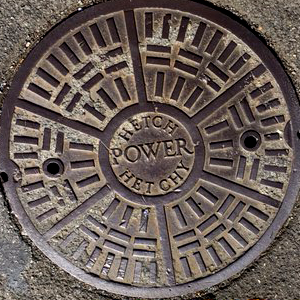A federal appeals court has sided with San Francisco in a longstanding battle over the use of the city’s public power that could have major implications for clean energy and an end to the corrupt company’s private monopoly.
At issue is PG&E’s refusal to connect municipal facilities and customers of the city’s power system to its grid without charging exorbitant fees. A Trump-era Federal Energy Regulatory Commission sided with the company, sticking San Francisco with a bill for as much as $600 million.

The background: San Francisco runs its own electric utility. A lot of folks don’t realize that, because the major news media never talk about it, but the city has a massive hydropower dam at Hetch Hetchy the generates enough power to run everything from the lights at City Hall to Muni—and more.
But thanks to a scandal more than 100 years old, (you can read all the history, which I wrote for the Bay Guardian, here) the city never built its own local power lines.
So the city has to pay PG&E to distribute its own clean, carbon-free power over the ancient private utility lines.
Problem is, the city has been moving more and more toward establishing itself as a municipal utility, which would compete with, and potentially replace, PG&E. If the city really wants a carbon-free future, it’s going to have to get rid of PG&E, which can’t meet even modest clean-energy goals.
But this is PG&E’s most lucrative service area—you make the most money selling power in the areas that are the most dense, since it costs less to run the lines and service the meters—and the company has spent millions of dollars over many decades trying to block anything that even hints at public power in San Francisco.
So PG&E has been making it difficult to connect, say, new affordable housing projects, which could get Hetch Hetchy power, to the grid.
The technical details are complicated enough to make your head hurt, even if you love this stuff, but the bottom line is this:
PG&E, like most utilities, delivers two types of power—primary and secondary. Primary power is the stuff that comes in at very high voltage over the major power lines. Secondary is the stuff that comes into your house.
You can’t just plug into primary power; it requires really expensive transformers to bring it down to the level that will run most appliances.
But PG&E insists that only primary power is available to some city facilities. That means, for example, that a new bathroom for Muni drivers that had only a light and a hand-dryer would require a transformer equivalent to the one that handles all the power at SF General Hospital.
This is obviously bogus, and just a tactic to make it harder for the city to use its own power for its own projects.
But FERC went along with the plan, leaving the city no choice but to go to the Court of Appeals in DC, which issued a clear opinion Jan. 25 stating that FERC was wrong, that PG&E was wrong, that this whole scheme is illegal, and that the FERC has to go back and fix it.
This could save the city hundreds of millions of dollars.
The only real long-term solution, since PG&E has rejected the city’s offer to buy the local grid, is either to use eminent domain to seize PG&E’s lines to create a full retail public power system, or to revoke the company’s franchise to operate in San Francisco and built out a new system, with modern equipment.
Either option would cost in the billions of dollars—but I have studied this for decades, run the numbers many times, and the profit the city would make selling retail power would vastly exceed the interest on the bonds that would be sold to finance the takeover.
We’re talking probably $250 million to $500 million a year in new municipal revenue, which could go to producing solar projects, wind projects, energy efficiency, and ultimately a carbon-free power system.
Oh, and lower power rates.
But for now, this is big news.
As Dennis Herrera, who fought the case as city attorney and is now the head of the SF Public Utilities Commission, noted:
This is a clear victory for fairness. For years, PG&E has been unlawfully trying to stymie competition by holding affordable housing, medical facilities, and other public projects hostage, denying them access to PG&E’s grid. This ruling sends a clear message that PG&E’s obstruction wasn’t justified. It also underscores why we should own our local electric distribution network rather than be subject to the whims of PG&E, a repeat convicted felon.
PG&E’s not going to sell. So when will the city start the process of eminent domain?




